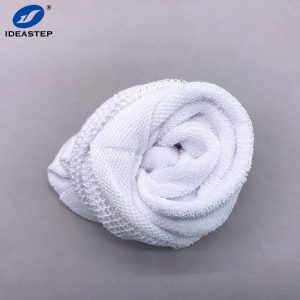Most of the diabetic socks on the market are used to keep the feet dry, reduce the risk of foot injuries, and avoid blocking or slowing blood circulation. They are usually made of materials with excellent moisture absorption capacity, are suitable, filled, unbonded, and do not have seams. They differ from ordinary socks in that they are non-elastic and seamless.
By eliminating elasticity, you are reducing contraction, which often occurs in swelling, which may restrict blood flow.
Why do people with diabetes need special socks?
Diabetes patients are at higher risk of foot injuries and infections due to damage to the circulatory system and nervous system caused by high blood sugar levels. Nerve injury or neuropathy can reduce sensation and increase the risk of injury, especially on the soles of the feet. It can also cause people with diabetes to be unknowingly injured and delay treatment. Circulation problems make it difficult for wounds to heal because it is difficult for them to benefit from the healing properties of blood flow. High blood sugar levels can also cause a sluggish immune system. These problems can create conditions that can lead to amputation or even death.
Foot care is a very important consideration for diabetic patients.
Do I need to buy diabetic socks?
For daily use by people without foot problems, conventional socks are comfortable, non-binding, assembled, and sufficient without lumps or uncomfortable seams. They should not be tight, tight, lumpy, or have uncomfortable seams. Make sure they will stay dry.
Practice good foot care and check your feet regularly for injuries.
For people who have foot problems or are at risk due to neuropathy and reduced circulation, then “diabetic socks” may be helpful. In addition, people who have foot moisture or sweat may find that these socks have a better ability to keep their feet dry and reduce the recurrence of fungal infections. Consult with your healthcare professionals for their opinions and suggestions.
What are the benefits of using diabetic socks?
Diabetic socks can help diabetics with infections and foot injuries in the following ways:
Moisture-wicking materials can keep the feet dry, so excess water will not become a breeding ground for fungal infections
Antibacterial properties can prevent the growth of bacteria and fungi
Increase comfort and reduce swelling
Keep feet warm to improve blood circulation
Seamless socks can reduce the risk of friction and blistering, which may eventually lead to foot ulcers in people with neuropathy or chronic hyperglycemia
Additional padding in sensitive areas (such as the soles of the feet) can help prevent food damage
If their wounds are draining, white socks can help remind diabetics

What type of diabetic socks are available and how do I know what to choose?
There are many different types of diabetic socks on the market, which makes it difficult for diabetics to know which socks to choose from.
Price may also play a role in your decision, because some socks may be expensive. The following is a breakdown of some features and price points:
Infused copper: Infused yarn made of copper, these socks should kill fungus on athletes’ feet and have anti-fungal properties. For example, if your athlete’s foot fungus transfers to your socks or insoles, the socks should prevent reinfection during subsequent wear. These socks also have an anti-odor effect. They cost between $5 and $18.
Moisture-wicking: These socks are designed to absorb moisture from the feet and evaporate sweat, thereby reducing the risk of fungus, infection and preventing odors.
The drier your feet, the more protection you will have against blisters and other foot wounds. They usually cost between $5 and $20 and can be purchased online or in stores.
Thick acrylic socks: People who exercise a lot should consider adding cotton acrylic socks because they keep their feet dry and have less foam than cotton socks. Acrylic fibers seem to have a better moisture-wicking ability and are also beneficial for people with reduced sensory or neuropathy because additional fillers can help prevent foot injuries. Many types of diabetic socks are made of this fiber.
Extra filling or gel filling: Thick socks or socks with gel filling are also available, and can help to absorb moisture and perspiration, protect the feet from injury, reduce sensitivity and irritation, and Provide Comfort.
Soft yarn: Diabetic socks are usually made of high-quality fabrics containing bamboo and wool. These types of yarns have natural antimicrobial properties and reduce rough abrasion and shear forces on the skin.

Blister protective yarn: This type of yarn is designed to reduce friction caused by blistering.
Smart technology socks: Diabetes socks have built-in sensors that can track the temperature of your feet and alert you when the app makes changes, such as a sore or ulcer that is forming. The shaped battery is located on the outside of the sock, near the ankle.
Are diabetic socks different from ordinary socks and compression socks?
Ordinary socks are different from diabetic socks because they are usually made of cotton that can absorb moisture. They may lose fit and contain seams that increase the friction and sensitivity of the foot.
Diabetic patients with peripheral artery disease may need compression stockings or socks to help circulation and reduce swelling. Compression stockings are different from diabetic socks because their purpose is to increase contraction and return blood to the heart.
